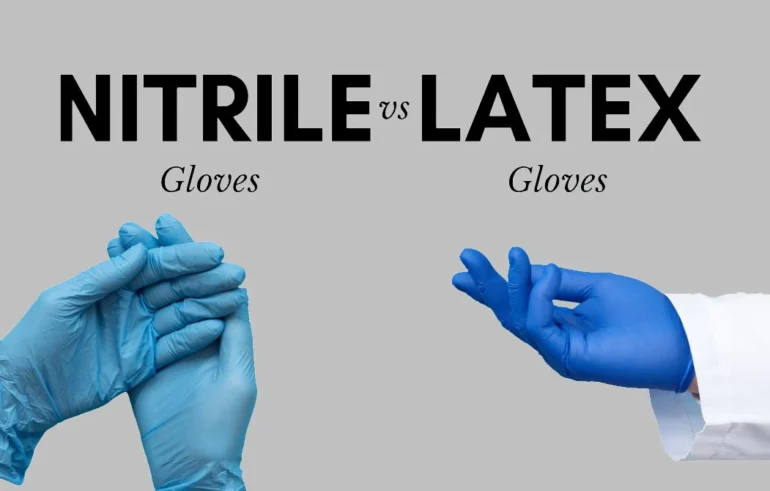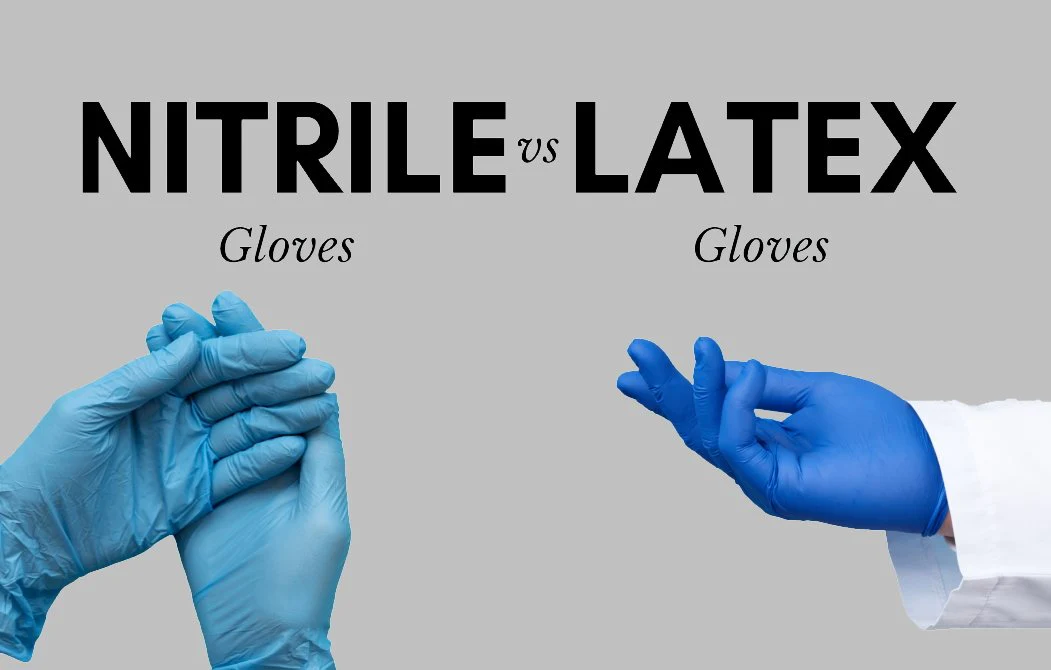When providing care for those with compromised immune systems, the proper use of gloves is essential for protecting your loved one’s skin from infections. The caregiving process can be painful and stressful for any family. Fortunately, there are many ways to make it more manageable for the person you’re caring for. Gloves are a simple but important item in this equation. Medical gloves protect caregivers from infections and cuts by preventing bacteria from entering their skin.
When it comes to caregiving, choosing the right gloves is critical. Your future self will thank you for not choosing those that were too small, too big, or didn’t fit properly. If you’re a new caregiver, it can be difficult to sort through all the different types of gloves. But choosing the best type of glove isn’t always intuitive—there are options like vinyl vs. nitrile vs. latex gloves when it comes to providing medical protection.
Nitrile gloves are made with a rubber-like material, making them more durable and flexible, but at the same time affording greater tensile strength. If a glove is too flexible, it can be difficult to use. Latex is composed of synthetic rubber that has been chemically changed to create a thin sheet resistant to oils, fats and acids. It provides resistance to most chemicals but doesn’t provide as much flexibility as nitrile. Although nitrile isn’t as resistant to chemicals like latex, it also reduces your risk of infection because no latex is used in the manufacturing process.
What’s the difference between vinyl, nitrile, and latex gloves?
-
Vinyl gloves
Vinyl gloves are a synthetic polymer that is derived from petroleum. Unlike latex, vinyl gloves are less expensive and more easily available in retail settings. Despite the convenience of this material, it’s not ideal for use with patients or other people who may have compromised immune systems. Vinyl gloves provide limited protection against chemicals, bacteria and other microbes as well as chemicals and bacteria found in trace amounts in your everyday environment such as mold spores or pet dander.
-
Nitrile gloves
Nitrile is a type of synthetic rubber. It’s incredibly durable, latex-free, and specifically designed for medical applications. Nitrile gloves were first developed during the early 90s’. Since then, they’ve become the go-to glove for many doctors, nurses, and home caregivers. Nitrile gloves are unique in that they tear easily. This feature makes it simple to tell if a glove (or pair of gloves) is compromised. There are various ways to lose your hands: from slipping on slipping out of your glove during use to developing an infection from a scratch or bite from critters who find nitrile okay to eat.
-
Latex gloves
Latex gloves are used in medical procedures and come in many different sizes. They’re especially useful for people who have arthritis because they provide excellent support while offering comfort and protection. Latex gloves can be worn without irritation or reaction, but that doesn’t mean they’re risk-free to use. Even if your loved one doesn’t suffer from a latex allergy, there are other health issues that may affect the gloves you want to buy.
What are the pros and cons of each type of glove?
Now that you know a little more about the different types of gloves, let’s take a closer look at their pros and cons.
Pros and cons of vinyl gloves:

Pros and cons of nitrile gloves:
Pros and cons of latex gloves:

In what situations should I use vinyl vs. nitrile vs. latex gloves?
-
Vinyl gloves
Since vinyl gloves contain more elastic than nitrile or latex, they tend to fit loosely. Avoid wearing them when changing diapers, providing bathing assistance, or helping your loved one use the toilet. Vinyl gloves are ideal if you’re on a tight budget, only need to wear gloves for a few minutes, or need to cover your hands while preparing snacks, drinks, or meals.
-
Nitrile gloves
When it comes to caregiving, nitrile gloves are considered the “gold standard.” Because they’re free of allergens like latex, there’s less risk of skin irritation, or in severe instances, anaphylaxis. Nitrile gloves fit your hands comfortably and encourage finger dexterity. That makes them ideal for cleaning and sanitation as well as tasks that require gripping, twisting, or lifting. When you’re finished wearing a pair of nitrile gloves, remove and toss them in the trash. Thanks to advances in manufacturing, many of the nitrile gloves currently on the market are biodegradable.
-
Latex gloves
Latex gloves are just as comfortable as nitrile, but because they’re made of latex, present the risk of an allergic reaction. They’re safe for use in almost any caregiving situation, as long as your loved one doesn’t suffer from a latex allergy.
Conclusion
In conclusion, when it comes to providing care for individuals with compromised immune systems, the proper use of gloves is crucial for protecting their skin from infections. Caregiving can be challenging, but by choosing the right gloves, you can make the process more manageable and ensure the safety of both the caregiver and the recipient of care.

PhD Scholar (Pharmaceutics), MPhil (Pharmaceutics), Pharm D, B. Sc.
Uzma Zafar is a dedicated and highly motivated pharmaceutical professional currently pursuing her PhD in Pharmaceutics at the Punjab University College of Pharmacy, University of the Punjab. With a comprehensive academic and research background, Uzma has consistently excelled in her studies, securing first division throughout her educational journey.
Uzma’s passion for the pharmaceutical field is evident from her active engagement during her Doctor of Pharmacy (Pharm.D) program, where she not only mastered industrial techniques and clinical case studies but also delved into marketing strategies and management skills.



















